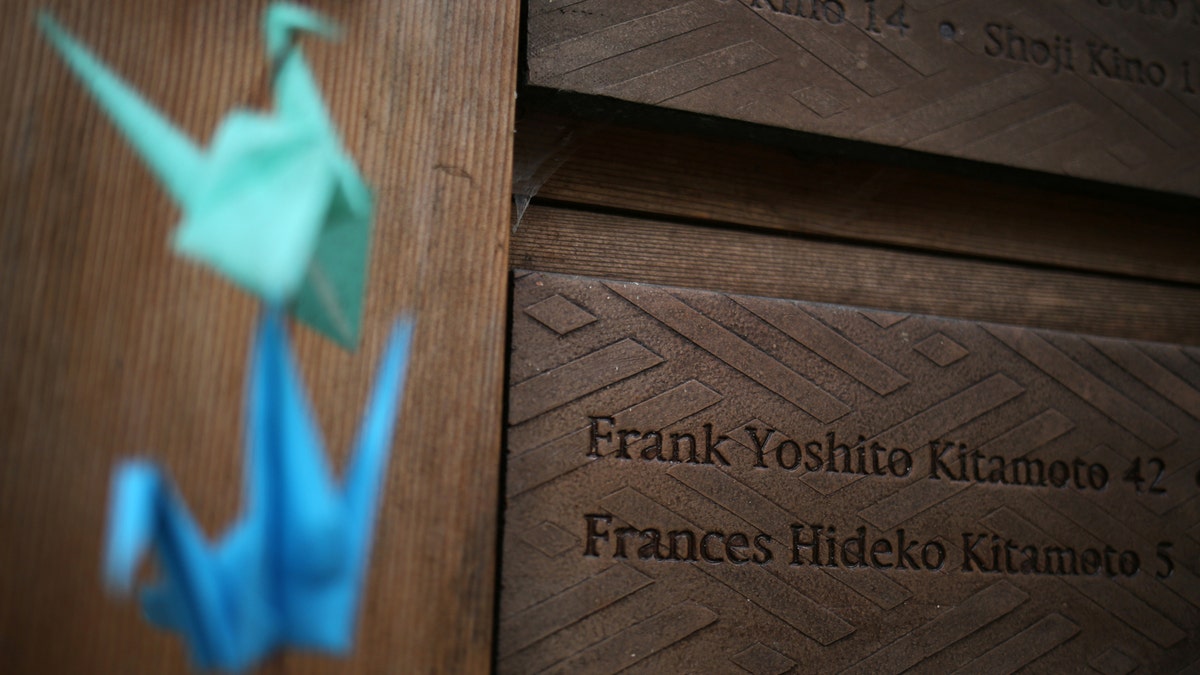
File photo: Origami cranes hang near names of some of the 227 men, women and children who were marched off the island to camps in 1942, at the Japanese American Exclusion Memorial on Puget Sound's Bainbridge Island, Washington, U.S. February 12, 2017. (REUTERS/Chris Helgren)
If you are an experimental foodie, this might be just the thing you’re looking for. Researchers with the MIT Tangible Media Group have announced the successful creation of edible, shape-shifting origami “pasta,” a food that literally changes shape when properly “manipulated.”
Researchers began the project in 2014 and drew inspiration from an unlikely source: they observed a specific bacterium that can transform its shape by responding to humidity. The bacterium is typically used to ferment soybeans for a common Japanese dish called Natto.
ROBOTS BRING APPLE PICKING INTO THE 21ST CENTURY
However, according to Wen Wang, co-author of the paper and a former graduate student and research scientist in MIT’s Media Lab, the team’s “a-ha” moment came when they were watching "Star Wars: The Force Awakens."
Wang points to the scene where Rey creates a kind of bread after dipping powder into water. “We were wondering if it is possible to make a shape changing food through manipulating food water absorption ability,” wrote Wang in an email to Fox News.
The actual food is made out of flat sheets of gelatin and starch. The team was inspired to create something that could ship easily and change shape once it reached its final destination. In order to meet the criteria, they engineered a flat, two-layer film made of gelatin with two different densities.
The researchers observed that although the food starts out flat, once it is exposed to water, it successfully “shape shifts” into predetermined shapes. The team tried this using common pasta shapes, such as macaroni, but found the food could also transform into more novelty type shapes, such as flowers.
Lining Yao, lead author of the paper and a former graduate student at MIT, wrote in an email to Fox News that the team worked to develop “smart materials” that have real-world applications in the kitchen. Although kitchens are at times ignored and don’t spring to mind regarding innovation, the edible origami is proof that smart materials can work in unlikely places.
“When we fry, boil, bake and microwave food, we see constant changes of physical properties including shape, color and smells. Chef uses these physical transformations as cues to cook,” wrote Yao. “To us, as interaction designers, food materials are media, and food transformations are ways food communicates. Shape changing noodles are one of such examples.”
Once the desired finished product was achieved, researchers put the items to the test. They teamed up with a high-end restaurant in Boston and used the “edible origami” in the creation of dishes such as a “caviar cannolli” and spaghetti that divides into smaller noodles when it is placed in hot liquids.
“Right now, [the food] gives people more options of food flavor, texture, and mouthfeels; It provides more interactive experiences,” wrote Yao. “it serves science education; and it saves shipping and packaging cost, thinking of large supermarkets, mountain hikers and Mars travelers, or whoever has the need of saving shipping spaces.”
